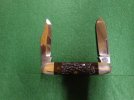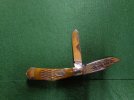- Joined
- Jul 17, 2004
- Messages
- 6,425
I am very much looking forward to seeing whatever amount of the Smoke Signal memos you are planning to post here..I will add to this thread, and hopefully others will to. I am currently involved in obtaining some of the Smoke Signal memos and will post them in here
as I receive them. That part is going to take a while. Information is always the key.
Greg
I am loving those little '83 Trappers with that sweet jigged honey bone.




























